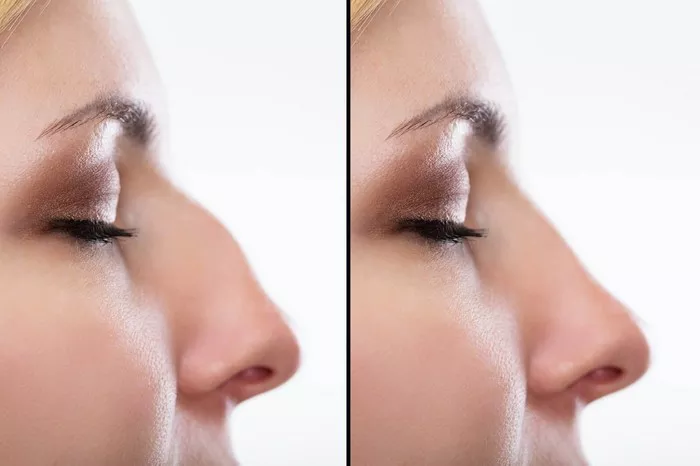Rhinoplasty, commonly referred to as a nose job, is a cosmetic surgical procedure that aims to enhance the appearance and proportion of the nose. If you’re considering a nose job in the Philippines, it’s important to understand the factors that contribute to the overall cost of the procedure. The cost of a nose job can vary depending on several factors, including the surgeon’s expertise, the complexity of the surgery, the location of the clinic, and additional fees such as anesthesia and facility charges. In this article, we will explore the average costs of a nose job in the Philippines and discuss the factors that influence pricing.
Factors Affecting the Cost of a Nose Job in the Philippines
Several factors contribute to the cost of a nose job in the Philippines. Understanding these factors will help you make an informed decision and plan for the financial aspect of the procedure. Here are some key considerations:
1. Surgeon’s Expertise and Reputation
The expertise and reputation of the surgeon performing the nose job play a significant role in determining the cost of the procedure. Highly experienced and reputable surgeons often charge higher fees due to their specialized skills and expertise. It’s crucial to choose a board-certified plastic surgeon who has a proven track record of successful rhinoplasty procedures.
2. Complexity of the Surgery
The complexity of the nose job can impact the cost. Some individuals may require a relatively straightforward procedure, such as dorsal hump reduction or tip refinement, while others may need more extensive work, such as correcting nasal asymmetry or addressing structural issues. The more complex the surgery, the more time, skill, and resources required, which can influence the overall cost.
3. Type of Rhinoplasty Technique
There are different techniques used in rhinoplasty, including open rhinoplasty and closed (endonasal) rhinoplasty. Open rhinoplasty involves making an external incision across the columella (the strip of skin between the nostrils), while closed rhinoplasty is performed entirely through internal incisions. Open rhinoplasty may be necessary for more complex cases, and it typically involves a higher cost due to the additional surgical steps involved.
4. Anesthesia and Facility Fees
The cost of a nose job includes fees for anesthesia and the use of the surgical facility. Anesthesia fees can vary based on the type of anesthesia used (local or general) and the duration of the procedure. Facility fees cover the costs associated with the surgical facility, including operating room expenses, nursing care, and post-operative monitoring.
5. Geographic Location
The location of the clinic or surgical facility can impact the cost of a nose job in the Philippines. Major cities and urban areas, such as Manila and Cebu, may have higher costs due to factors like higher demand, increased overhead expenses, and the presence of renowned surgeons.
Average Cost of a Nose Job in the Philippines
While the cost of a nose job can vary, it’s helpful to have a general idea of the average prices in the Philippines. The overall cost typically ranges from PHP 80,000 to PHP 300,000 or more, depending on the factors mentioned above. It’s important to note that this range is an approximation, and individual cases may vary significantly.
It’s recommended to consult with multiple plastic surgeons to obtain a personalized quote for your specific needs. During the consultation, the surgeon will evaluate your nasal structure, discuss your goals, and provide a detailed estimate of the costs involved. Be cautious of extremely low-cost offers, as they may indicate inexperienced surgeons or substandard facilities. It’s crucial to prioritize the qualifications, expertise, and reputation of the surgeon over price alone when making your decision.
Additional Considerations
When budgeting for a nose job, it’s important to consider the overall financial investment. In addition to the surgical costs, you should also factor in pre-operative consultations, post-operative appointments, prescription medications, and any potential revision surgeries. It’s advisable to discuss these details with your surgeon during the consultation to have a clear understanding of the overall expenses involved.
Insurance Coverage and Financing Options
In most cases, rhinoplasty is considered a cosmetic procedure and is not covered by health insurance. However, if the surgery is deemed medically necessary to address functional issues, such as breathing difficulties resulting from a deviated septum, a portion of the cost may be covered by insurance. It’s recommended to check with your insurance provider regarding their specific policies and requirements.
If paying for the nose job upfront is challenging, many surgeons and clinics offer financing options to help make the procedure more accessible. These options allow you to divide the cost into manageable monthly payments. It’s important to carefully review the terms and conditions of any financing agreement and ensure that it aligns with your financial capabilities.
Conclusion
The cost of a nose job in the Philippines can vary based on several factors, including the surgeon’s expertise, the complexity of the surgery, the technique used, anesthesia and facility fees, and the location of the clinic. The average cost ranges from PHP 80,000 to PHP 300,000 or more, depending on individual circumstances. It’s important to consult with qualified plastic surgeons, discuss your goals, and obtain personalized quotes to make an informed decision. Remember to prioritize the surgeon’s qualifications and reputation over price alone to ensure a safe and successful rhinoplasty experience.


